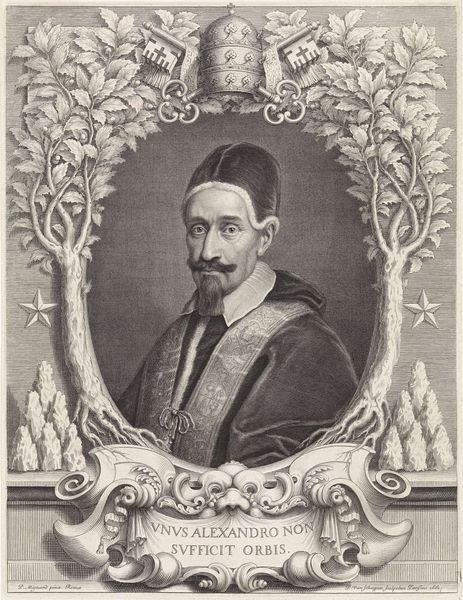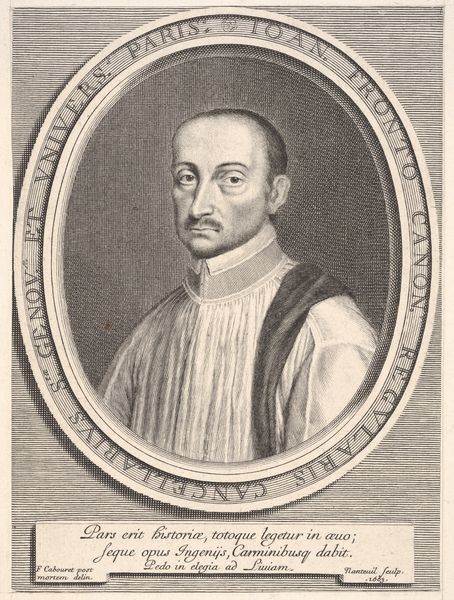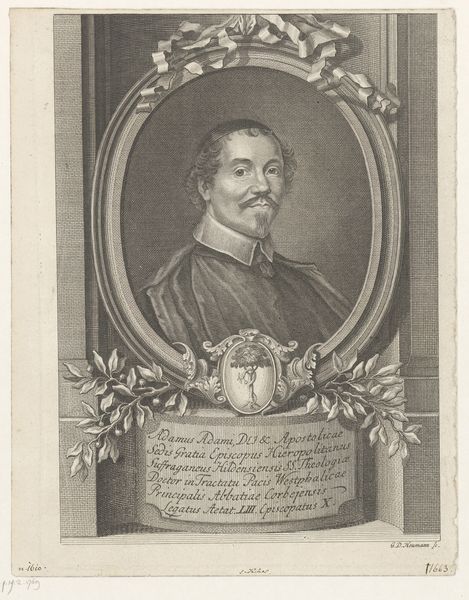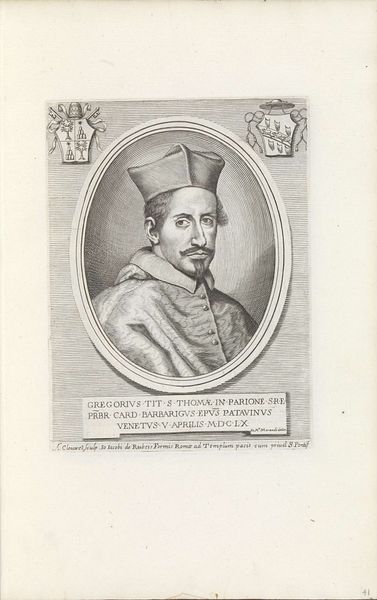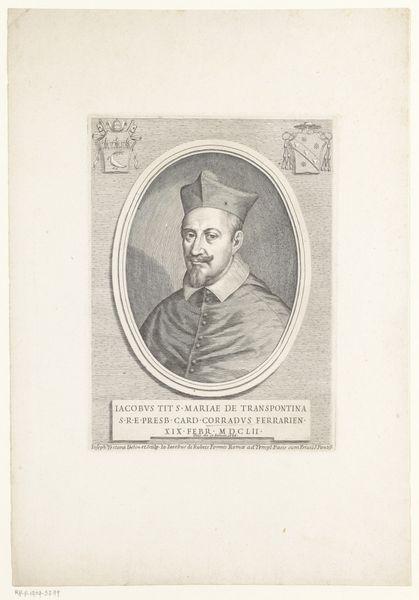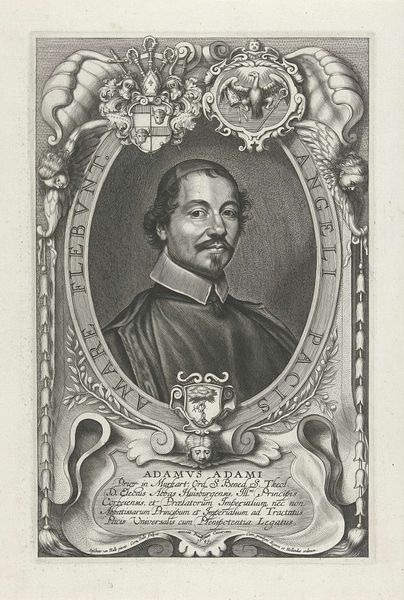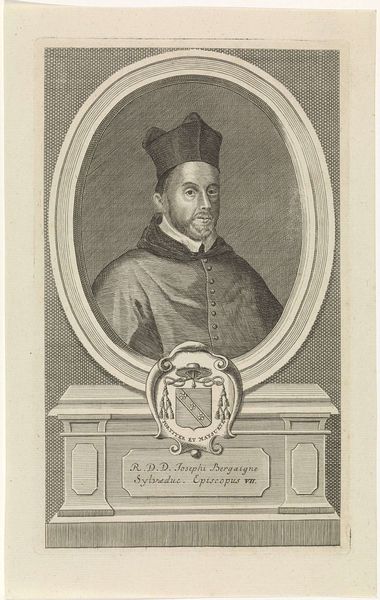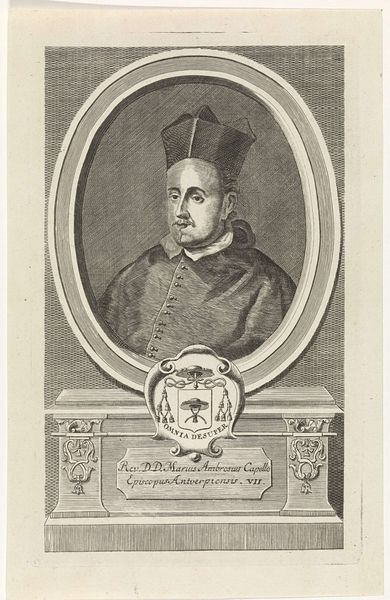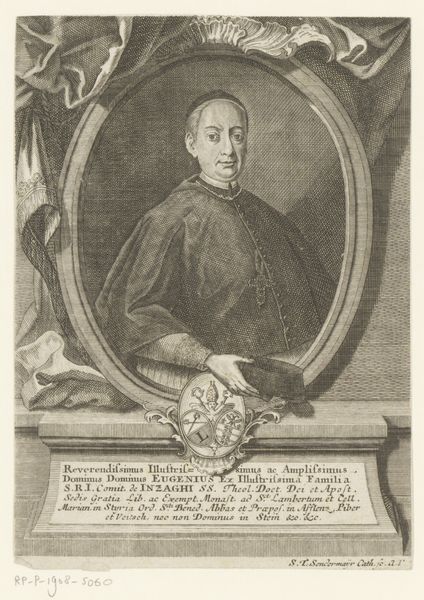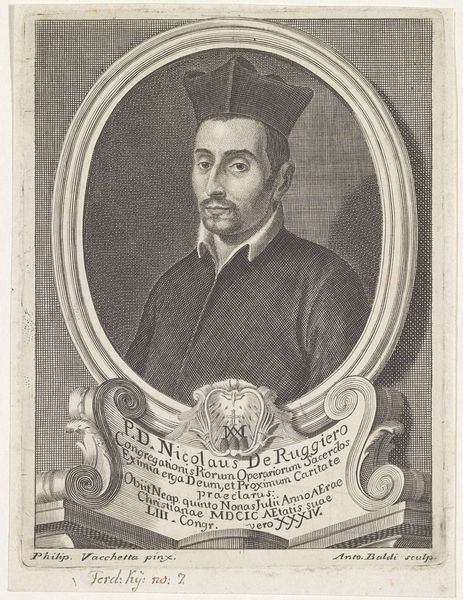
print, engraving
#
portrait
#
baroque
# print
#
engraving
Dimensions: height 332 mm, width 233 mm
Copyright: Rijks Museum: Open Domain
Editor: Here we have Michel Lasne’s "Portret van Henri Cauchon de Maupas," created in 1645. It’s an engraving, which I find quite interesting – there’s a formality that the medium brings to the subject. What do you see in this portrait, particularly concerning its historical context? Curator: What immediately strikes me is how Lasne's portrait exemplifies the public role of art in solidifying power. Notice how Cauchon de Maupas is meticulously presented, not just as an individual, but through his various titles meticulously inscribed below. What do these titles suggest about the social and political structures of the time? Editor: It’s all about status, right? Bishop, Count… key advisor to the King and Queen. It’s broadcasting his influence. So the portrait serves almost as a…visual resume? Curator: Precisely. Consider the political landscape of 17th-century France, rife with religious and aristocratic power struggles. Portraits like these were critical tools in image management, asserting authority. The Church, the monarchy, aristocracy—each played their part in the politics of imagery. Notice how his attire, the cross, and even his expression contribute to the message. How do you think viewers at the time might have interpreted these symbols? Editor: Probably as symbols of unwavering power and faith. Today, maybe we're more critical of such displays, but back then, it reinforced the established order? Curator: Yes, it speaks volumes about the era's values. We look at this today, displayed in a museum. Does that location change how we understand the portrait compared to its initial intent? Editor: Absolutely! In the museum, it’s art, historical artifact, open for interpretation. Originally, it was pure propaganda. Curator: Indeed, that very shift highlights the layers of meaning embedded within it. Considering all these aspects deepens our comprehension of the work itself and of that crucial period in history. Thanks for this point of view. Editor: Likewise! It's fascinating to consider how context really shifts the entire meaning.
Comments
No comments
Be the first to comment and join the conversation on the ultimate creative platform.
